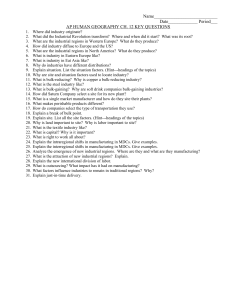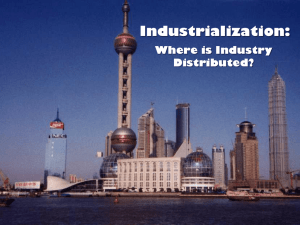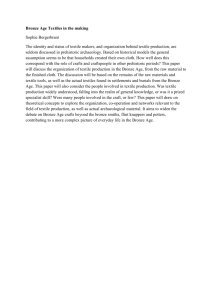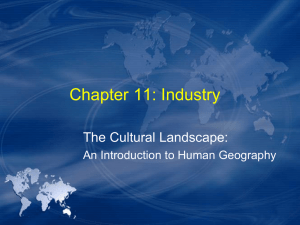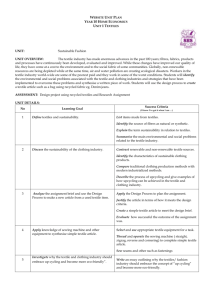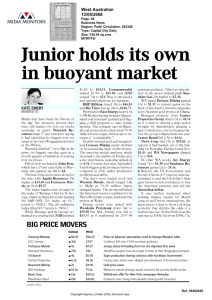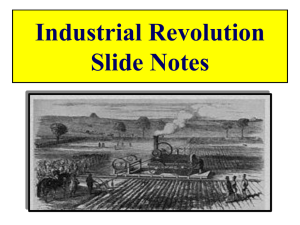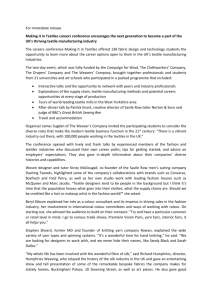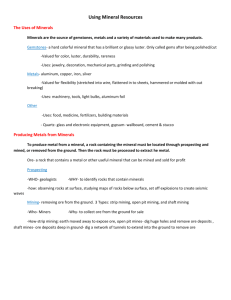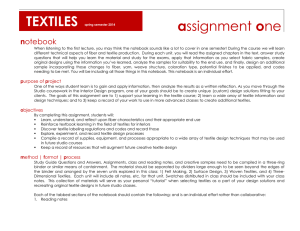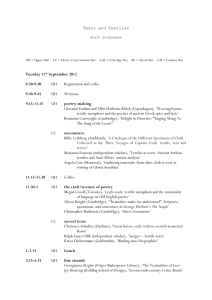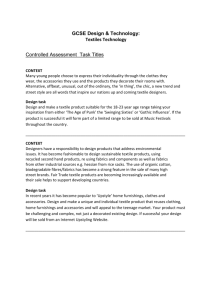Industry and Urban - LewisHistoricalSociety
advertisement
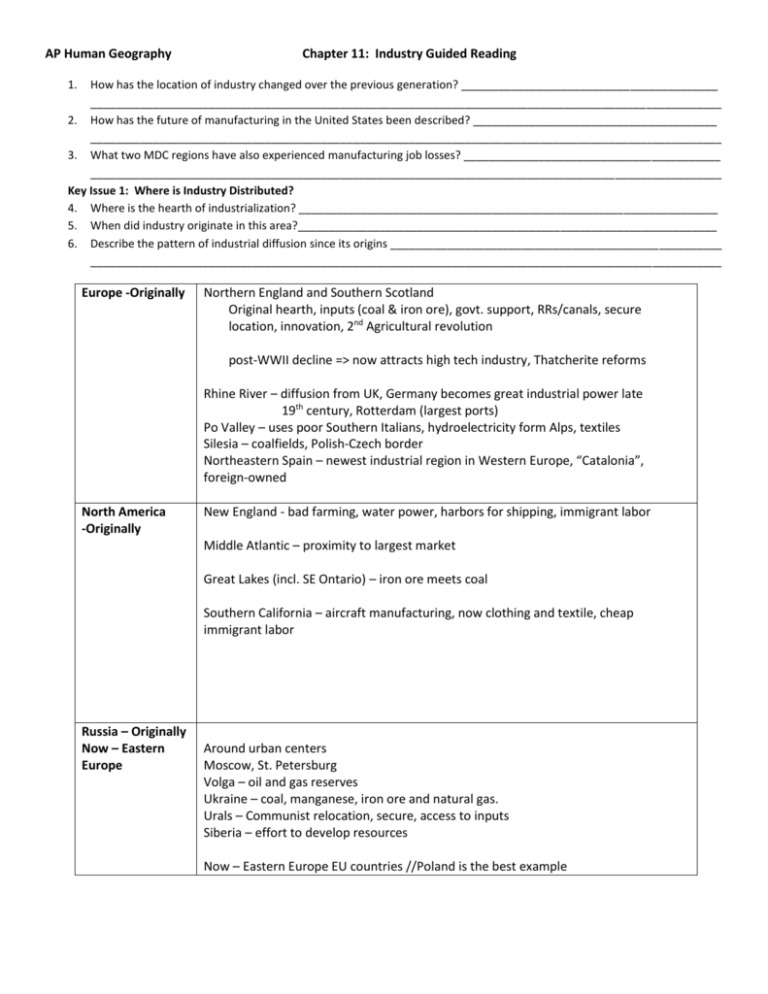
AP Human Geography Chapter 11: Industry Guided Reading 1. How has the location of industry changed over the previous generation? _________________________________________ _____________________________________________________________________________________________________ 2. How has the future of manufacturing in the United States been described? _______________________________________ _____________________________________________________________________________________________________ 3. What two MDC regions have also experienced manufacturing job losses? _________________________________________ _____________________________________________________________________________________________________ Key Issue 1: Where is Industry Distributed? 4. Where is the hearth of industrialization? ___________________________________________________________________ 5. When did industry originate in this area?___________________________________________________________________ 6. Describe the pattern of industrial diffusion since its origins _____________________________________________________ _____________________________________________________________________________________________________ Europe -Originally Northern England and Southern Scotland Original hearth, inputs (coal & iron ore), govt. support, RRs/canals, secure location, innovation, 2nd Agricultural revolution post-WWII decline => now attracts high tech industry, Thatcherite reforms Rhine River – diffusion from UK, Germany becomes great industrial power late 19th century, Rotterdam (largest ports) Po Valley – uses poor Southern Italians, hydroelectricity form Alps, textiles Silesia – coalfields, Polish-Czech border Northeastern Spain – newest industrial region in Western Europe, “Catalonia”, foreign-owned North America -Originally New England - bad farming, water power, harbors for shipping, immigrant labor Middle Atlantic – proximity to largest market Great Lakes (incl. SE Ontario) – iron ore meets coal Southern California – aircraft manufacturing, now clothing and textile, cheap immigrant labor Russia – Originally Now – Eastern Europe Around urban centers Moscow, St. Petersburg Volga – oil and gas reserves Ukraine – coal, manganese, iron ore and natural gas. Urals – Communist relocation, secure, access to inputs Siberia – effort to develop resources Now – Eastern Europe EU countries //Poland is the best example China Japan - Originally Mexico Three clusters: Guangdong/Hong Kong Shanghai – Yangtze River Beijing – Gulf of Bo Hai Regional clustering has led to wealth disparity in China Tokyo – Osaka Tokyo and Nagasaki 1950 – 1960s = cheap goods, depressed wages 1970s – transformation to electronics, autos Train workers for high tech jobs = most skilled work force NAFTA – and Northern Mexico –close to US market // Assembly Factories=Maquiladoras Key Issue 2: Why are Situation Factors Important? 7. What factors determined where Honda located their new auto assembly plant in the United States? Situation factors 1. Site factors 1. 2. 2. 3. Key Issue 3: Why are site factors important? 8._______________________________________ result from the unique characteristics of a location. 9. What are the three production factors that may vary among locations? a. ______________________ b. ___________________________ c. ___________________________ 10. Create a circle graph that shows the global distribution of labor among the following regions: MDCs, China, India, “Other”. 11. Useful statistics: a. Average overall percentage of manufacturing costs of labor in the U.S. __________________________________ b. Average wage paid to manufacturing workers in MDCs._______________________________________________ c. Items that add to labor costs in MDCs _____________________________________________________________ d. Average manufacturing wages in LDCs_____________________________________________________________ 12. Why would the auto industry not be considered labor-intensive while the textile industry would? ___________________________________________________________________________________________________ ___________________________________________________________________________________________________ ___________________________________________________________________________________________________ ___________________________________________________________________________________________________ ___________________________________________________________________________________________________ 13. What % of the dollar value of world manufacturing does the textile industry represent?____________________________ 14. What % of world manufacturing employment does the textile industry represent? ________________________________ 15. Textiles: Process Location Statistic Spinning Low-wage countries China = 2/3rds of cotton thread 16. Why were early factories located inside cities? a. Situation factors i. ______________________________________________________________________________________ ii. ______________________________________________________________________________________ iii. ______________________________________________________________________________________ b. Site factors i. ______________________________________________________________________________________ ii. ______________________________________________________________________________________ c. What site factor have cities always lacked?__________________________________________________________ i. Resulting in ____________________________________________________________________________ 17. What types of amenities may affect an executive’s decision to select locations?____________________________________ ____________________________________________________________________________________________________ 18. Define ubiquitous. _____________________________________________________________________________________ 19. How did the concept of ubiquitous affect the concentration of industry in the late 19th century? ______________________ ____________________________________________________________________________________________________ 20. What site factor is most dramatically changing the location of industry in the 21 st century? __________________________ 21. Draw the Burgess Concentric Zone Model and describe it. (Be sure to explain bid-rent curves). Drawing Description 22. What are the weakness of this model? 23. Draw the Hoyt Sector Model and describe it. (Be sure to explain how it is an improvement over the Burgess Model). Drawing Description 24. What are the weakness of this model? 25. Draw the Multiple Nuclei Model and describe it. (Be sure to explain how its CBD differs). Drawing Description 26. What are the weakness of this model?

